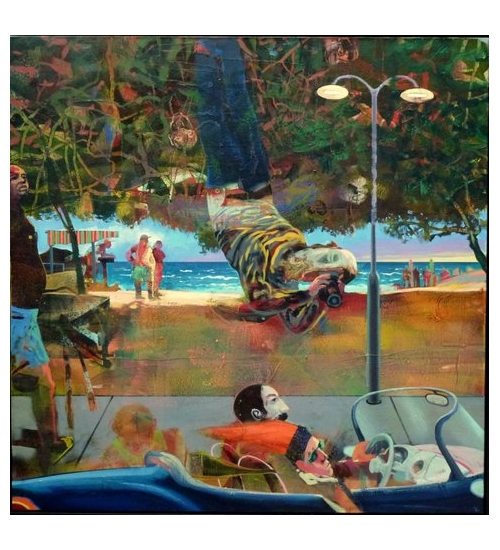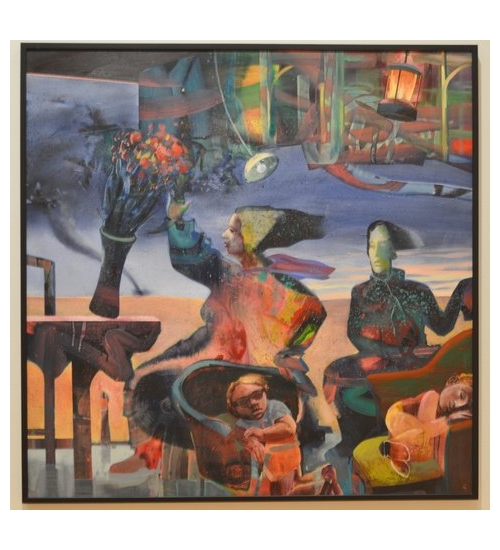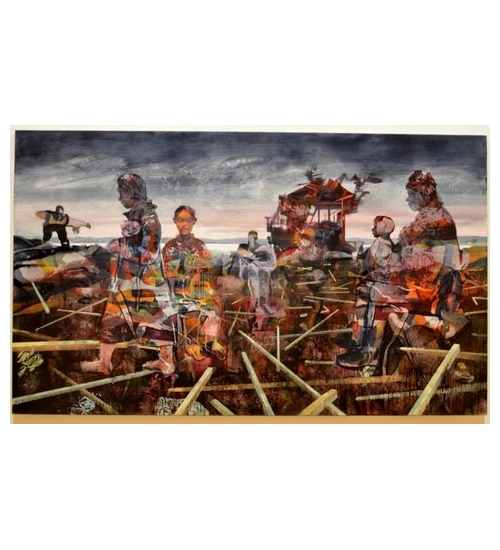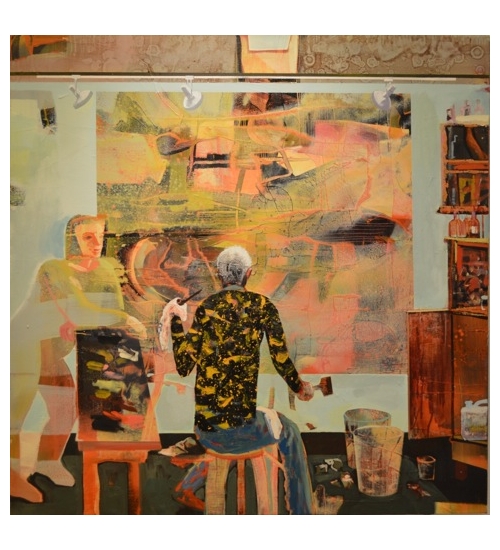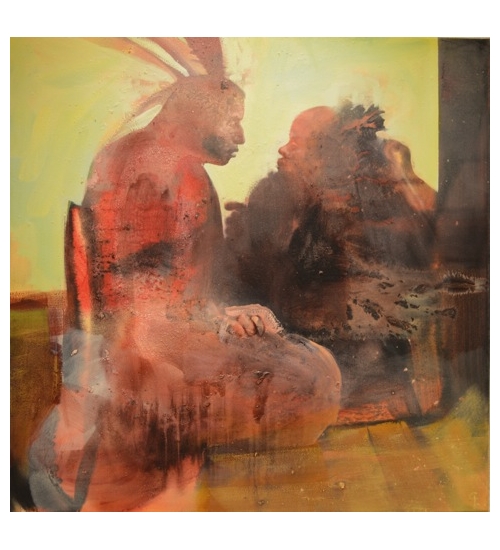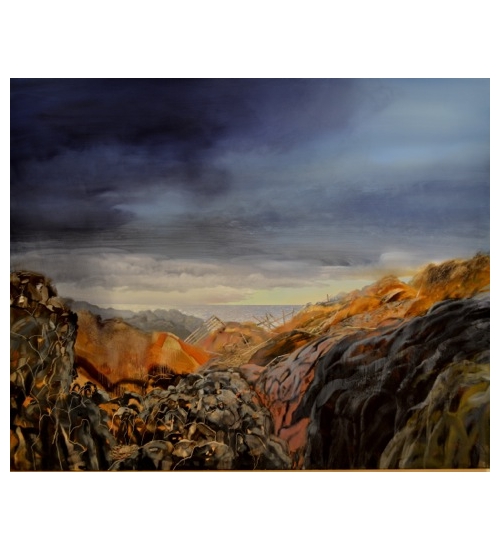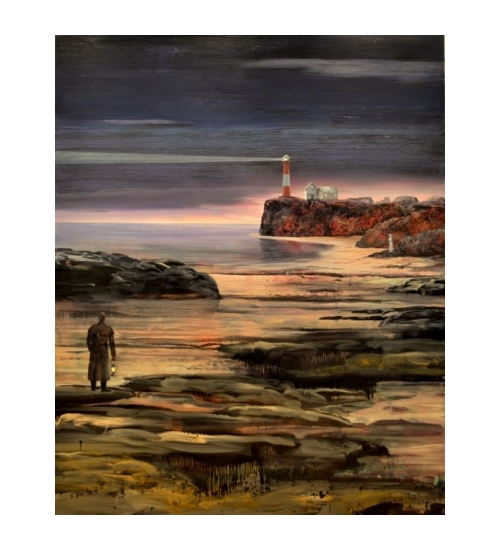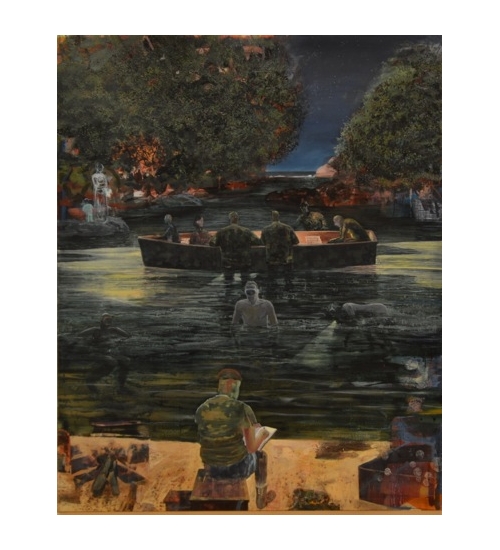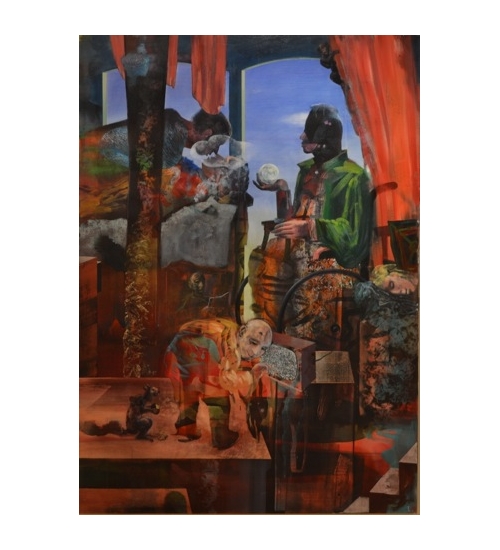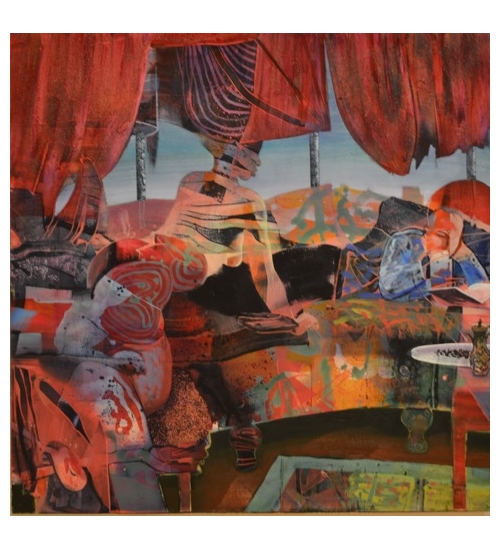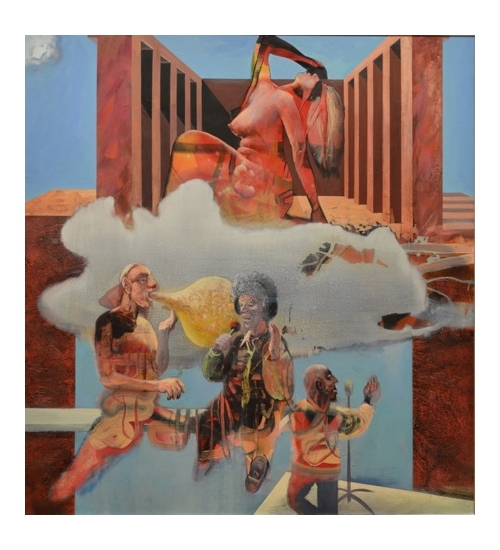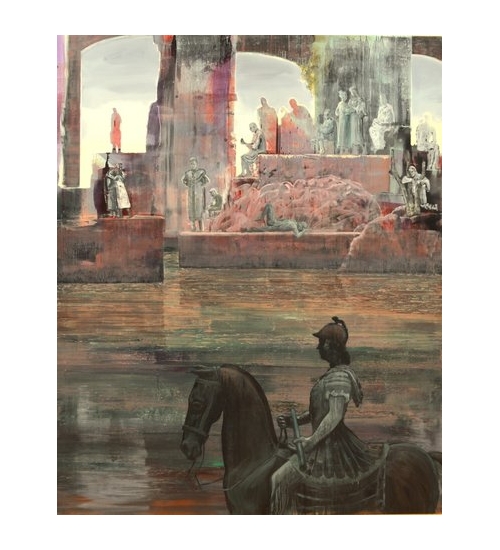Windows in Time
Peter Esdaile was born in Montréal, Canada in 1947, but grew up in Oslo and Bærum. Recently he has moved back to Norway after living in the US for six years and now is living on the island of Tjøme. Since 1973, Esdaile’s work has been characterized by colorful and energetic paintings, graphics and sculptures, with numerous exhibitions amongst them Bonn, Germany, Brandts Klaedefabrik i Odense, Gallery F15, in Moss.
This retrospective exhibit focusing on the years 2005-2015, is an unusual journey in time and space. With a background in modernist abstraction from the 40s and 50s, and the classical figurative, Esdaile’s works are an energetic synthesis of composition and spontaneity, order and chaos, the Apollonian and the Dionysian. Fragments of classical composition are woven together with a more organic creation of surrealist imagery of contemporary pop culture, history and myths.
From this perspective, Windows in time is both a phenomenological sensing of the linear sequential measuring of time and an observation of the eternal dream-like moment of the present.
Windows in time explores the existential essence of a modern individual’ s understanding of the human experience. The point of creating meaning in a chaotic contemporary world where our consciousness is filtering and processing scientific information, personal narratives, Western philosophy and Eastern mysticism.
Esdaile’s influences that emerge in this exhibition are thus an eclectic mix of West and East, politics and mysticism. In this exploration of consciousness, Esdaile’s narratives are often inspired by recognizable historical events, past and present, seen through the prism of the archetypal expression. These relatively recent works are tableaux that seem like symbolic places where contemporary life might confront the timelessly human. Here classical mythologies can meet popular cultural phenomena of today, architectonic forms struggle with humans and nature. The result can be both strikingly vivid and poetic. In the last two years the dramatic scenes of his earlier production have given way to a more contemplative interpretation of the shamanic aspects of the elements of nature. Nature as a force for creation, destruction and renewal.

